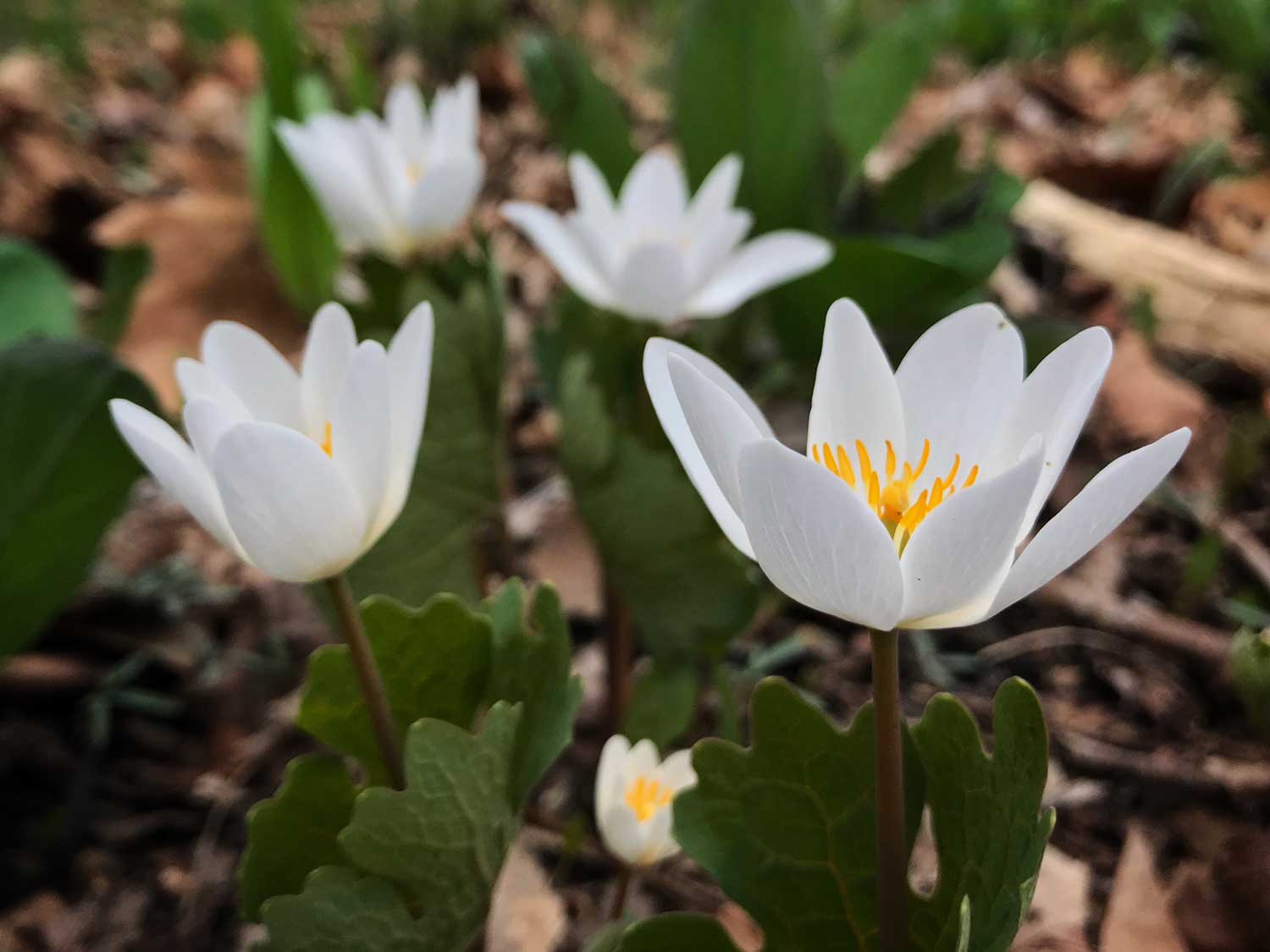Things we love: The aptly named bloodroot

About this series: While many people love nature, different people love different aspects of it. One may have a soft spot for flowers, while another gravitates toward a particular animal. And yet for others, it's all about the scenery. "Things We Love" explores those jaw-dropping parts of nature that one person finds particularly special. In this edition, Sara Russell, an interpretive naturalist at Isle a la Cache museum, tells us why she loves bloodroot.
One of my favorite things this time of year is the spring wildflowers that start popping up in woodlands. You might miss them if you are looking up at the sky for birds or focused straight ahead on your destination. Often, they hug the ground, caught up in last year’s leaf litter. But once you see a flash of color, interesting texture or delicate beauty it becomes a wonderful treasure hunt with your eyes trained to the ground.
Called ephemeral, these blooms don’t stick around long. They take advantage of the light filtering through the still leafless trees. They include trillium and trout lily and mayapple – but my favorite, along with skunk cabbage, is bloodroot.
Bloodroot is part of the lily family, and you can see why when you come across a patch. The deeply lobed leaves look quite a bit like waterlily pads waving through the air instead of on water. Their delightful white flowers with a pop of yellow in the center from multiple stamens also resemble waterlilies. The flowers have between eight and 12 petals, and they grow up from the ground on a leafless stem. These neat flowers open up during the day with the sun, but close at night.
As beautiful as the flower is, the coolest part is the root. If you dig up the plant and crack open the root, deep red sap drips out like blood, especially this time of year. This is where it gets its scientific name, Sanguinaria canadensis. Sanguis is the Latin word for blood. The sap can range from deep red to orange to even yellow; the color and amount seem to fade as the season goes on. Just imagine all the uses for this root! It’s been used for dyes and paints all through history.
Bloodroot is the trickster of the flowering world. The flowers contain no nectar, but insects are attracted to their colorful centers and might stop in to check it out, accidentally dropping off pollen on the way. And if no insects are around, they just seem to self-pollinate!
Ants play an important role in bloodroot’s survival, harvesting seeds in a symbiotic relationship. The ants love the little pockets of oils and sweets attached to the seeds. They carry the seeds to their nests and eat the oils and sweets, but throw away the actual seed. And now the bloodroot can grow in new locations!
To find bloodroot this time of year, you need to look for wooded areas with damp soils, like alongside riverbeds. Next time you are out for a walk, train your eyes to the ground to see if you spot any.
I love bloodroot for its beauty, its unexpected hidden charms and its symbiotic relationship with other species. So in this time of social distancing, lift up your spirits with a hunt for this wonderful plant!
